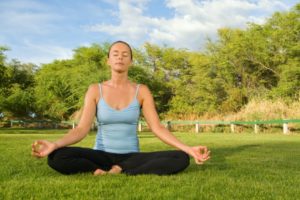Enhance Flow in Athletes with Mindfulness
By John M. de Castro, Ph.D.
“mindfulness-based interventions for sports are effective because they help athletes direct their attention to the current athletic task, while minimizing external distractions.” – Mitch Plemmons
Athletic performance requires the harmony of mind and body. Excellence is in part physical and in part psychological. That is why an entire profession of Sports Psychology has developed. “In sport psychology, competitive athletes are taught psychological strategies to better cope with a number of demanding challenges related to psychological functioning.” They use a number of techniques to enhance performance including mindfulness training. It has been shown to improve attention and concentration and emotion regulation and reduces anxiety and worry and rumination, and the physiological and psychological responses to stress. As a result, mindfulness training has been employed by athletes and even by entire teams to enhance their performance.
Flow refers to a state of mind that is characterized by a complete absorption with the task at hand, often resulting in enhanced skilled performance. The flow state underlies the athletes’ feelings and thoughts when they recall the best performances of their careers. It is obvious that the notion of flow and mindfulness have great similarity. There is little known, however, about the relationship between mindfulness and flow in athletes.
In today’s Research News article “Mindfulness training enhances flow state and mental health among baseball players in Taiwan.” (See summary below or view the full text of the study at: https://www.ncbi.nlm.nih.gov/pmc/articles/PMC6307497/ ), Chen and colleagues recruited the members of an elite male baseball team in Taiwan and provided them with a 4-session mindfulness training including meditation, yoga, and discussion of the application of mindfulness to their sport. They were measured before and after training and 4 weeks later for depression, anxiety, eating disorders, sleep quality, competitive anxiety, mindfulness, and flow state.
They found that after training and at follow-up there was a significant increase in sleep quality and flow state and a significant decrease in eating disorders and competitive anxiety. In addition, the higher the level of mindfulness of the player, the greater the level of flow state. They also saw a non-significant increase in the team’s performance after the training.
These are interesting results but conclusions need to be tempered with the fact that there wasn’t a control condition. This leaves many alternative confounding interpretations. Nevertheless, these pilot findings suggest that further research is warranted to investigate the effect of mindfulness training on athletic flow state. These results contribute to the growing body of research that suggests that being mindful produces enhanced athletic performance.
So, enhance flow in athletes with mindfulness.
“Achieving peak performance and especially being able to develop flow experiences in athletes is the holy grail of sport psychology. . . researches are getting one step closer to unveiling the psychological factors that influence flow experiences, and mindfulness could be an essential part of the puzzle.” – Carmilo Saenz
CMCS – Center for Mindfulness and Contemplative Studies
This and other Contemplative Studies posts are also available on Google+ https://plus.google.com/106784388191201299496/posts and on Twitter @MindfulResearch
Study Summary
Chen, J. H., Tsai, P. H., Lin, Y. C., Chen, C. K., & Chen, C. Y. (2018). Mindfulness training enhances flow state and mental health among baseball players in Taiwan. Psychology research and behavior management, 12, 15-21. doi:10.2147/PRBM.S188734
Abstract
Objective
To examine the effect of mindfulness-based training on performance and mental health among a group of elite athletes.
Methods
This study aimed to evaluate the effect of mindful sport performance enhancement (MSPE) on mental health, flow state, and competitive state anxiety using a 4-week workshop. We recruited an amateur baseball team (N=21) in Taiwan, and collected information by self-reported questionnaires administered before, immediately after, and at a 4-week follow-up. The primary outcome was to evaluate sports performance by flow state and competitive state anxiety, which included self-confidence, somatic anxiety, and cognitive anxiety. The secondary outcome was to explore whether MSPE intervention can improve anxiety, depression, sleep disturbance, and eating disorders.
Result
After the workshop and follow-up 1 month later, we found improvements in flow state (P=0.001; P=0.045), cognitive anxiety in competitive anxiety (P=0.056; P=0.008), global eating disorder (P=0.009; P<0.001), marked shape concern (P=0.005; P<0.001), and weight concern (P=0.007; P<0.001). Scores of sleep disturbance (P=0.047) showed significant improvement at follow-up. We also found significant association between flow state and mindfulness ability (P<0.001).
Conclusion
This is the first mindfulness intervention to enhance athletes’ performance in Taiwan, and also the first application of MSPE for team sports. Our study results suggested that mindfulness ability is associated with flow state, and that MSPE is a promising training program for strengthening flow state and mental health.
https://www.ncbi.nlm.nih.gov/pmc/articles/PMC6307497/









